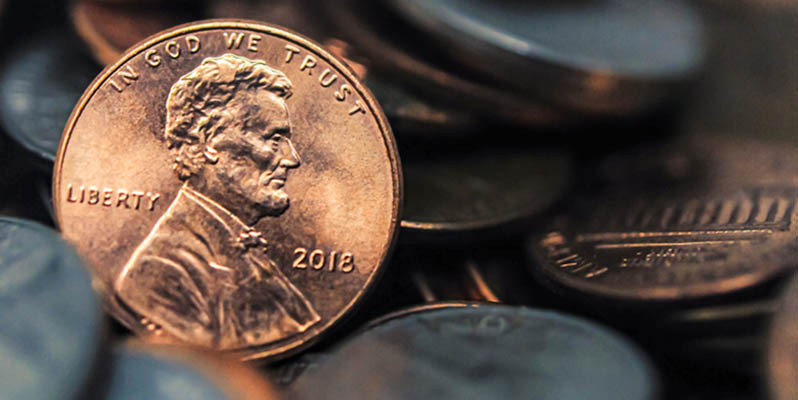How the Penny’s Retirement Affects Everyday Transactions

The United States is saying farewell to a familiar piece of currency: the penny. The U.S. Mint has officially stopped producing the one-cent coin, a decision driven by simple economics.
It costs more to produce a penny than it’s worth. According to the U.S. Mint’s 2024 annual report, each penny costs 3.7 cents to produce and distribute. On top of manufacturing costs, fewer people are relying on cash. A survey from the Federal Reserve found that cash only accounted for 14% of all payments in 2024, down from 31% in 2017 ̶ when its share was more than double.
The penny is still a legal tender, meaning you can pay and receive pennies, but increasingly, there are signs appearing asking for exact change. The U.S. Mint has stopped production and delivered its last shipment of pennies in August leaving some businesses and consumers, asking questions about what comes next.
The Challenge: Managing Shortages and Business Impacts
For businesses that rely on cash, the primary challenge is immediate and logistical: making exact change. It presents a complex situation, and while it’s not a traditional shortage but rather a circulation slowdown, some businesses are seeing disruptions. Some national chains are already asking customers for exact change or rounding transactions to the nearest nickel.
As retailers begin to navigate this shortage, it’s created a legal challenge as many states and local laws effectively prevent rounding while non-cash payments remain unaffected. For retailers who accept Supplemental Nutrition Assistance Program (SNAP) benefits, there are very specific rules against rounding prices.
As your trusted advisor, WSFS is committed to helping you navigate this transition smoothly. As your financial institution, we are proactively managing our existing coin inventory to ensure fair distribution for as long as possible, however, penny orders will be limited based on remaining supply.
A Practical Guide for Businesses
It’s important for any business owner to assess what this means for them. Start by reviewing your cash-handling procedures and considering strategies to limit customer friction:
- Shift your Pricing Structure: Instead of lowering the cost by a penny, so something ends in 99 cents, round up to the nearest dollar.
- Encourage Electronic Payments: Promote the use of debit cards, credit cards, and mobile payment options. These methods are unaffected by the coin shortage and can streamline the checkout process for you and your customers.
- Train and Inform Your Staff: Your employees are on the front lines of this change. Equip them with clear information so they can confidently explain the situation to customers. Simple signage can also help manage consumer expectations and prevent confusion.
- Communicate with Your Banker: Stay in touch with your relationship manager about your coin needs. While supplies are limited, we are here to provide guidance and support as you adapt.
What Consumers Can Expect
For consumers, the phaseout of the penny will likely have a minimal impact on daily life, especially if you are part of the more than 80% of people using alternate methods of payment. You can still use the pennies you have for purchases, and WSFS will continue to accept them for deposit. We may, however, be unable to fulfill your request for penny rolls.
The shift away from the penny is significant but not unprecedented. Several other countries including Canada, Australia, and others have pulled their version of a penny out of circulation.
If you have any questions or require assistance, please do not hesitate to contact your relationship manager or visit your local banking office.
 |
BY SHELLY KAVANAGH Shelly Kavanagh is Senior Vice President, Director of Retail Delivery for WSFS Bank… |

Helping you boost your financial intelligence.
Read our financial resources from your friends at WSFS.



